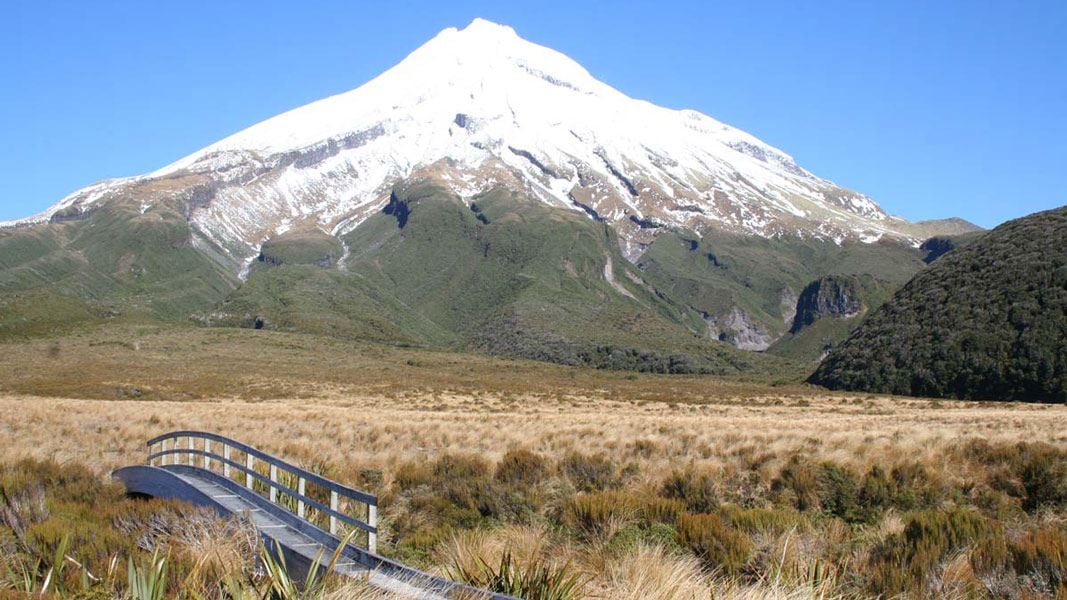
Located in Te Papa-Kura-o-Taranaki and North Egmont area in the Taranaki region
Introduction
Wind across the lower slopes of Taranaki Maunga – discover towering cliffs, a mighty waterfall, a sphagnum moss swamp and stunning views on this day walk version of the popular 2–3 day Pouākai Circuit.Stay safe in the outdoors
- Choose the right trip for you. Learn about the route and make sure you have the skills for it.
- Understand the weather. Check weather forecasts.
- Pack warm clothes and extra food. Check gear lists.
- Share your plans and take ways to get help. Share directly or use the Outdoor Intentions form or Plan My Walk. Take a distress beacon.
- Take care of yourself and each other.